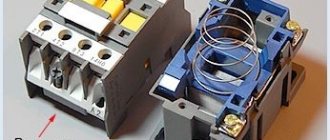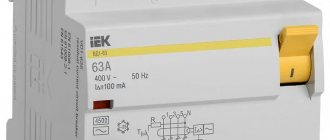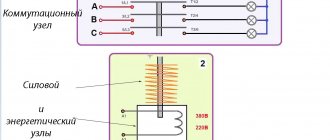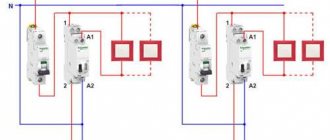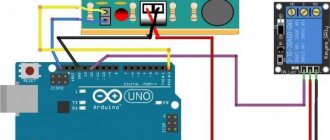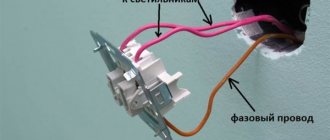Why should a light switch break a phase, and not a zero?
At first glance, there is no difference, both circuits work the same way, because even if the zero is broken by the switch, the light will go out in the same way as with a phase break.
To better understand this, let's, for clarity, look at a switch connection diagram in which a neutral conductor (zero) is connected to it.
As you can see, with such a circuit for connecting the switch, there is always voltage on the lamp, this is the main drawback that can cause serious problems and inconvenience in the operation and maintenance of light sources.
First of all, the main danger of this connection method is that you can be “shocked”, for example, when replacing lamps, when you accidentally touch the conductive contacts.
In addition, if the insulation of the supply cable is broken or the electrical connection inside the lamp is damaged, the phase conductor may short-circuit to the housing. And then, with a simple touch of a chandelier or sconce, you yourself will become a conductor, part of the electrical network, you will feel a serious electric discharge, and, under certain conditions, electric shock can even be fatal.
This becomes especially relevant because for lighting groups, in the same PUE, it is allowed not to install differential protection, for example, an RCD, so you will learn about the voltage on the housing only when you feel the discharge, while the lamp may not even be turned on.
Another less dangerous, but no less unpleasant problem is the flickering of lamps when the lights are off. Modern energy-efficient lamps - energy-saving (fluorescent) or LED, can respond to even minor fluctuations in the electrical network; even ultra-low currents can trigger them. Therefore, even when the light switch is turned off, such lamps can flicker, and this reduces both the life of the lamps and simply irritates many.
Therefore, in order to avoid these and some other problems, it is correct to make sure that the switch breaks the phase and not the zero.
Unfortunately, most often, people wonder whether phase or zero should be in the switch in the case when they are already faced with incorrect wiring, having zero in the switch and all the problems described above. What to do in this case?
Installation options - advantages and disadvantages
Therefore, this solution was replaced by remote load control

